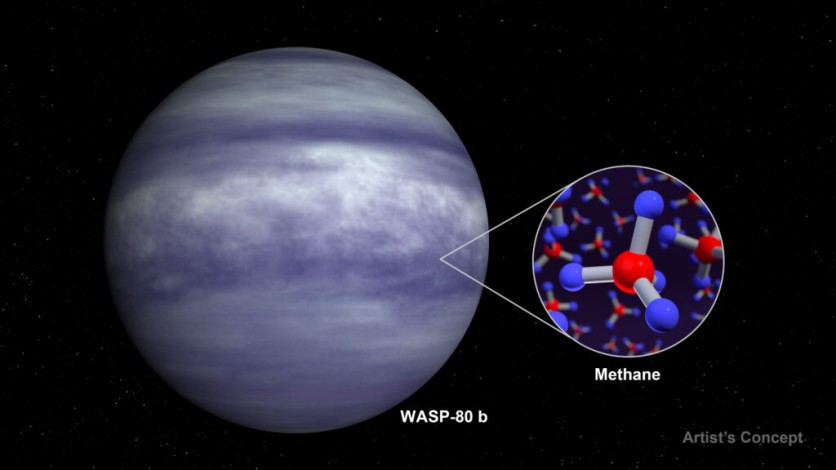NASA's James Webb Space Telescope has uncovered the presence of methane in the atmosphere of the exoplanet WASP-80 b as it transits in front of and behind its host star.
While water vapor has been previously identified in numerous exoplanets, methane has proven elusive, especially when studied through space-based spectroscopy.

WASP-80 b Described by NASA as 'Warm Jupiter'
NASA noted that methane is a key molecule found in the atmospheres of gas giants in our own solar system, such as Jupiter and Saturn. The detection of methane in the atmosphere of WASP-80 b opens up new avenues for researchers to explore exoplanets' chemical composition and atmospheric conditions.
WASP-80 b, described as a "warm Jupiter" due to its temperature of about 825 kelvins (approximately 1,025 degrees Fahrenheit), is similar in size and mass to Jupiter but with a temperature range falling between hot Jupiters and cold Jupiters.
The exoplanet, which completes an orbit around its red dwarf star every three days, is 163 light-years away in the Aquila constellation. By observing WASP-80 b using the transit and eclipse methods, researchers were able to study the combined light from the star and the exoplanet.
During the transit, where the planet moves in front of the star, the starlight dims, revealing the exoplanet's atmospheric composition. The eclipse method involves observing the system as the planet passes behind its star, measuring the infrared light emitted by the planet.
To analyze the data, researchers transformed the initial observations into spectra, providing a measurement of how much light is absorbed or emitted by the exoplanet's atmosphere at different wavelengths.Two models were employed to interpret the spectrum, offering a comprehensive understanding of the atmospheric conditions.
The methane detection was confirmed through robust statistical methods, surpassing the standard for confidence in scientific discovery. The findings not only represent the identification of a challenging molecule but also pave the way for deeper investigations into the exoplanet's birth, growth, and evolution.
Read Also : New Computer Simulation Sheds Light on Early Galaxy Formation Aligned With NASA James Webb's Observations
Apples to Apples, Planets to Planets
One exciting aspect of this discovery is the potential for comparisons with our solar system. By measuring the amount of methane and water in WASP-80 b, researchers can infer the ratio of carbon atoms to oxygen atoms, providing insights into the planet's formation and migration.
This opportunity for an "apples-to-apples" comparison between our solar system's gas giants and exoplanets may enhance the understanding of planetary atmospheres.
Looking ahead, the James Webb Space Telescope's continued observations of WASP-80 b will enable researchers to delve into the properties of its atmosphere at different wavelengths of light. That opens the door to discovering other carbon-rich molecules, further expanding scientists' knowledge of exoplanetary atmospheres.
Related Article : NASA James Webb Achieves One of Its First Major Science Goals After Probing the Atmosphere of TRAPPIST Planet





